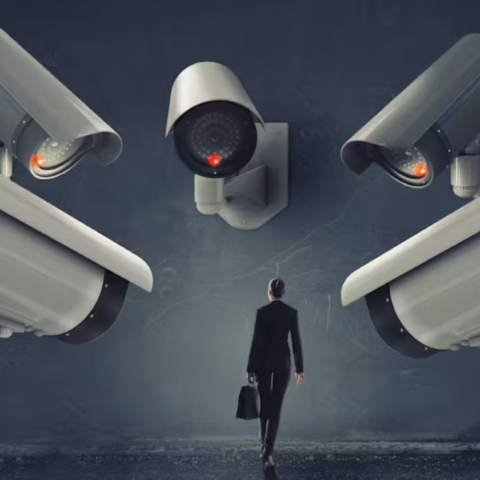By: Kaitlyn Walker
The Apple v. Samsung decision Friday sent shockwaves rippling through the technology industry. Samsung met the market with losses totaling at 7.7 percent, amounting to the greatest loss for the tech giant since October 2008. The immediate market impact of the ruling will mean more for future Apple profits than the $1.05 billion in damages: the direct hit to Samsung stock will likely give Apple a foothold to stifle competitive innovation the smartphone market. While the cutthroat nature of Apple’s litigation strategy may have shocked industry-insiders and tech-geeks alike, the legal victory is exemplary of a long-standing strategy by the world’s most respected company to crush industry competition.
The beginnings of Apple’s take-no-prisoner’s market strategy were evident as early as 1994, when it sued its key competitor, Microsoft, in an attempt to prevent the company from adopting graphical user interface, or GUI, in its Windows operating systems. Apple inevitably lost the case, however, due to one key complication: Apple neither invented nor owned the rights to GUI technology. GUI was created by Xerox at the PARC research lab and incorporated into Apple’s Macintosh operating systems without the company ever purchasing the rights to the technology. On a purely legal basis, Apple’s litigation team would certainly have been aware that copyright protection applies solely to “original expression,” or to the entity that created the product, in this case Xerox. The four-year timeframe of the lawsuit in conjunction with the obvious lack of original expression by Apple makes the motivations for its litigation suspect. It would have been illogical for the company to engage in a legal battle it was certain to loose unless the litigation itself was its primary strategy. By engaging fledgling Microsoft in a patent battle for four years, Apple could simultaneously shake consumer confidence in Microsoft and stall the company’s future innovations.
While one instance of legal mischief is certainly not enough to establish a pattern, the late Steve Jobs’ approved biography confirms Apple’s single-minded strategy to eliminate realistic competition. His explanation for Apple’s impending lawsuit against Google’s Android technology emphasized that “Our lawsuit is saying, ‘Google, you [expletive] ripped off the iPhone, wholesale ripped us off. Grand theft. … I will spend my last dying breath if I need to, and I will spend every penny of Apple’s $40 billion in the bank, to right this wrong. I’m going to destroy Android, because it’s a stolen product. I’m willing to go thermonuclear war on this.”
The question of whether or not Apple may have a legitimate case against Google’s Android technology is irrelevant. A legal basis for litigation against Google does not justify the tenacity or timing of Apple’s suits against its greatest competitors. That Apple is seeking litigation against Google for similar patent violations almost immediately after its victory against Samsung proves the company’s overall strategy is interested in more substantial market gains than patent compensation.
Apple’s legal success vis-à-vis its competitors is more than a byproduct of free market competition. The impact of Apple’s victory has consequences extending past industry competitors down to consumers themselves. In order to meet consumer expectations, companies will have to purchase licenses for Apple’s patents. This is already occurring on the market, for example, when Microsoft purchased a license from Apple to develop its Windows 8 operating system. The lawsuit will only exacerbate the necessity of purchasing these licenses if companies wish to remain competitive with Apple products. Even if companies do purchase these licenses, however, the consumer will pay the cost of the licenses in the form of higher prices on non-Apple products. The result: either consumers will exclusively purchase Apple products because they are the most competitively priced, or they will have to pay higher prices for a competitor’s product.
Although cost is perhaps the deal breaker when it comes to technology, future customers will likely have to sift through far fewer, less innovative options as well. Samsung’s loss to Apple may discourage other companies from taking innovation risks. Few companies in the market can afford to be saddled with a billion dollar lawsuit, and with Apple’s willingness to seek litigation against competitors, these companies will be even less likely to seek risky innovations. In an effort to avoid future lawsuits, Samsung’s successors to the contested Galaxy Tab, the Galaxy Tab 2 and the Galaxy Tab Note, are underpowered compared to their predecessor, and go to such lengths to avoid direct competition with the Apple iPad that they would likely be less competitive on the market. They have slower processors and lack retina screens, features which give the iPad a competitive edge in the tablet industry.
Even if Apple’s competitors remain afloat with products that are competitively handicapped by patents, the lawsuit itself is a slippery slope for patent litigation. The jury was comprised of only four smartphone owners, and one juror with any experience with patents. The jurors ruled in favor of Apple because they found Samsung deliberately violated the patent, but did not determine whether or not there was prior art (other versions of the technology before Apple released its version) and also failed to establish whether or not Apple had original or unique use of the technology. Both factors should be essential in determining patent rights, and the fact that they were overlooked in this trial could render them irrelevant in future trials.
Apple’s legal victory marks uncertain and trying times to come for the entire smartphone technology. iQuestion whether or not the market will be able to withstand the storm.

